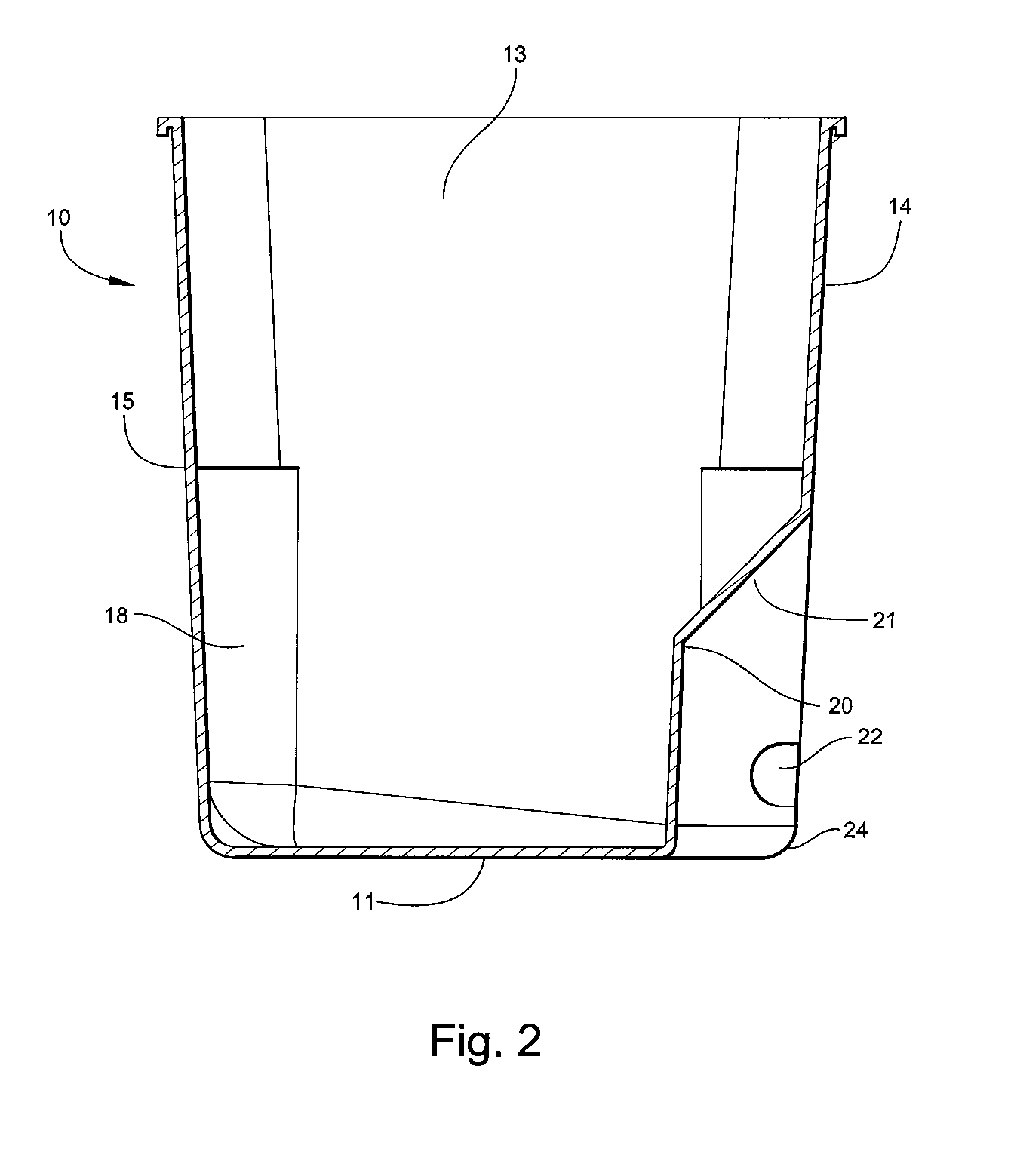Insert for a rollout type waste container and waste container assembly
a roll-out type, waste container technology, applied in the field of insert bins, can solve the problems of insufficient bins, impractical purchase, high cost, etc., and achieve the effect of reducing the interior volume of the waste container
- Summary
- Abstract
- Description
- Claims
- Application Information
AI Technical Summary
Benefits of technology
Problems solved by technology
Method used
Image
Examples
Embodiment Construction
[0047]Referring now specifically to the drawings, an insert bin shown generally at 10 according to one preferred embodiment of the invention is shown in FIG. 1. The insert bin includes a floor 11 upon which two opposing sidewalls 12 and 13, a forward wall 14, and an opposing rear wall 15 are formed, thereby defining an interior 16. As described more fully below, the interior 16 of the insert bin 10 functions as a reduced-volume refuse compartment when the insert bin 10 is positioned within the refuse compartment of a conventional rollout type waste container (hereafter referred to interchangeably as a “waste container” or “waste cart”). The forward wall 14, rear wall 15 and major opposing sidewalls 12 and 13 terminate in upper edges which form a continuous rim 17 defining a mouth of the insert bin 10.
[0048]As is shown in FIG. 1, a recessed relief 18 area is formed in each of four lower corners 19 of the insert bin 10 adjacent the floor 11. The relief areas 18 provide enhanced stabil...
PUM
 Login to View More
Login to View More Abstract
Description
Claims
Application Information
 Login to View More
Login to View More - R&D
- Intellectual Property
- Life Sciences
- Materials
- Tech Scout
- Unparalleled Data Quality
- Higher Quality Content
- 60% Fewer Hallucinations
Browse by: Latest US Patents, China's latest patents, Technical Efficacy Thesaurus, Application Domain, Technology Topic, Popular Technical Reports.
© 2025 PatSnap. All rights reserved.Legal|Privacy policy|Modern Slavery Act Transparency Statement|Sitemap|About US| Contact US: help@patsnap.com



